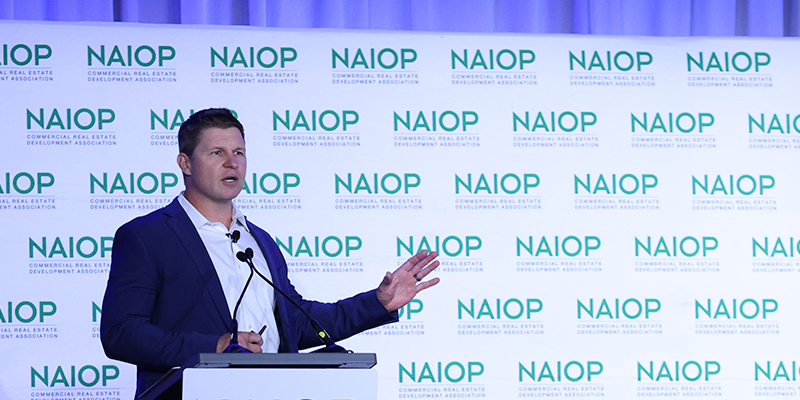On January 1, 2020, “We were on a certain pathway toward the future,” said Jeff De Cagna FRSA FASAE, executive advisor for Foresight First LLC. Then, the global pandemic hit. “We got knocked off that pathway and have found ourselves in the ‘discontinuous next’ – a period of radical uncertainty, volatility and risk.” De Cagna delivered the keynote address on innovation at NAIOP’s virtual Chapter Leadership and Legislative Retreat this week with a focus on the seismic shifts that quickly marked a decade he calls the “Turbulent Twenties.”
While it can feel unsettling, the “discontinuous next” period can also prompt innovation, De Cagna said. As one example, he cited vaccines that were developed for the novel coronavirus within a year of the virus emerging on the world stage. That is not to say that the results of innovation are always positive, he said, noting difficulties with effective distribution of these vaccinations across the U.S.
“Why do you want to innovate?” De Cagna asked the NAIOP chapter leaders attending the session. This is a deceptively simple question, he said. Innovation “must be purposeful and tied to a larger intention beyond generating revenue. Otherwise, it will be hard to sustain over the long term.” Profitability is the outcome of successful innovation rather than the place where innovation begins, De Cagna said. “There must be broader organizational and stakeholder purposes in mind.”
We can easily fall into short-term thinking when we have stakeholders asking, “What have you done for me lately?” But short-term thinking is an impediment to innovation, De Cagna said. The past year has shown that short- and long-term matters are both important. We have all been in survival mode to some extent over the last year, which is understandable, he said, but we cannot stay there indefinitely. And while we cannot always address problems on a macro scale, we do have it in our power to change our direction and help get people unstuck. “We have to be able to shift our thinking and action toward the future,” De Cagna said.
Not all resources required for innovation are tangible, said De Cagna, such as building relationships that will provide value or gaining access to intellectual capital. “I would take a broader view of what investment in innovation looks like,” he said.
When someone wants to order an item online and it can be delivered the next day or even the same day, it feeds instant gratification, and we cannot necessarily change that, De Cagna said. However, we can change the frame in which people see what associations are doing, helping stakeholders to see that their problems, needs and outcomes are being addressed, even if they cannot be addressed immediately. Also, keep in mind that there may be benefits that emerge right away even as the group works toward a longer-term goal.
“We can shape a different future through innovation,” De Cagna said. “Right now, it seems very scary, right now it seems very challenging – and it is – and many people are struggling with what to do next. … But we can shape a different future, and I hope everyone will begin to embrace that and say, ‘Let’s make this happen, even though it’s challenging and will require effort and time – it’s worth doing.’”
De Cagna challenged the group to consider: “What will be your unique contribution to making innovation happen in the Turbulent Twenties?”








